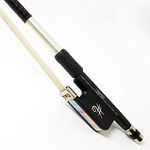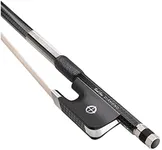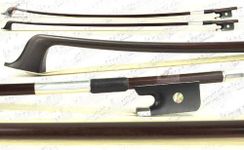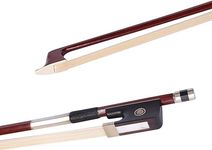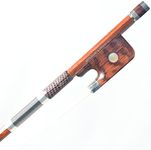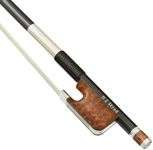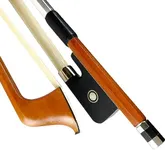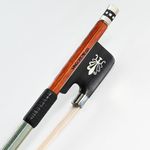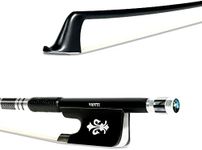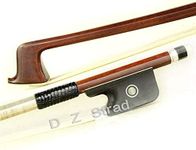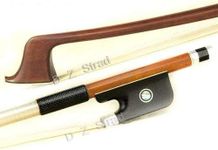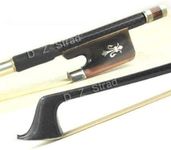Buying Guide for the Best Cello Bows
Choosing the right cello bow is crucial for any cellist, whether you're a beginner or a professional. The bow significantly affects the sound and playability of your instrument. When selecting a cello bow, consider factors such as weight, balance, material, and flexibility. Each of these aspects can influence your playing experience and the sound you produce. Understanding these key specifications will help you make an informed decision and find a bow that complements your playing style and needs.WeightThe weight of a cello bow typically ranges from 70 to 80 grams. This spec is important because it affects the ease of handling and the sound production. Lighter bows (around 70-74 grams) are easier to maneuver and can be beneficial for fast, intricate playing. Heavier bows (75-80 grams) can produce a richer, more powerful sound but may require more strength and control. To pick the right weight for you, consider your playing style and physical comfort. Beginners might prefer a lighter bow for ease of use, while advanced players might choose based on the desired sound and their ability to handle the bow.
BalanceBalance refers to how the weight of the bow is distributed along its length. A well-balanced bow feels comfortable in the hand and allows for smooth, even strokes. If a bow is tip-heavy, it can be harder to control, especially for delicate passages. If it's frog-heavy, it might feel cumbersome and affect agility. To find the right balance, try holding the bow and see how it feels in your hand. A balanced bow should feel neither too heavy at the tip nor at the frog, allowing for effortless control and even sound production.
MaterialCello bows are typically made from either pernambuco wood, carbon fiber, or brazilwood. Pernambuco is a traditional choice known for its excellent balance, flexibility, and sound quality, but it can be expensive. Carbon fiber bows are durable, resistant to changes in humidity and temperature, and offer good performance at a lower cost. Brazilwood is a more affordable option but may not provide the same level of performance as pernambuco. When choosing the material, consider your budget, the climate where you live, and your playing needs. Advanced players might prefer pernambuco for its superior qualities, while beginners and intermediates might find carbon fiber or brazilwood to be more practical choices.
FlexibilityFlexibility refers to how much the bow can bend without losing its shape. This spec is important because it affects the bow's responsiveness and the range of dynamics you can achieve. A more flexible bow can produce a wider range of tones and is often preferred for expressive playing. However, too much flexibility can make the bow harder to control. Stiffer bows provide more stability and are easier to handle, especially for beginners. To choose the right flexibility, consider your level of experience and the type of music you play. Beginners might benefit from a stiffer bow for better control, while advanced players might prefer a more flexible bow for greater expressiveness.
Frog and GripThe frog is the part of the bow that you hold, and the grip is the wrapping around the stick near the frog. These specs are important for comfort and control. The frog is usually made of ebony and can have different shapes and sizes, affecting how it feels in your hand. The grip, often made of leather or rubber, provides traction and comfort. When choosing a bow, make sure the frog fits comfortably in your hand and the grip feels secure. This will help you maintain control and play for longer periods without discomfort.
